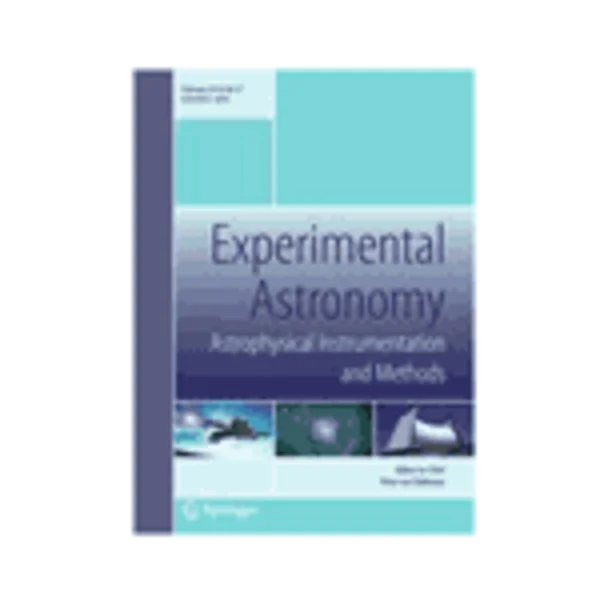-
gravitas: general relativistic astrophysics via timing and spectroscopy
جزئیات بیشتر مقاله- تاریخ ارائه: 1392/07/24
- تاریخ انتشار در تی پی بین: 1392/07/24
- تعداد بازدید: 937
- تعداد پرسش و پاسخ ها: 0
- شماره تماس دبیرخانه رویداد: -
gravitas is an x-ray observatory, designed and optimised to address the esa cosmic vision theme of “matter under extreme conditions”. it was submitted as a response to the call for m3 mission proposals. the concept centres around an x-ray telescope of unprecedented effective area, which will focus radiation emitted from close to the event horizon of black holes or the surface of neutron stars. to reveal the nature and behaviour of matter in the most extreme astrophysical environments, gravitas targets a key feature in the x-ray spectra of compact objects: the iron kαline at ~6.5 kev. the energy, profile, and variability of this emission line, and the properties of the surrounding continuum emission, shaped by general relativity (gr) effects, provide a unique probe of gravity in its strong field limit. among its prime targets are hundreds of supermassive black holes in bright active galactic nuclei (agn), which form the perfect laboratory to help understand the physical processes behind black hole growth. accretion plays a fundamental role in the shaping of galaxies throughout cosmic time, via the process of feedback. modest (~sub-arcmin) spatial resolution would deliver the necessary sensitivity to extend high quality x-ray spectroscopy of agn to cosmologically-relevant distances. closer to home, ultra-high count rate capabilities and sub-millisecond time resolution enable the study of gr effects and the equation of state of dense matter in the brightest x-ray binaries in our own galaxy, using multiple probes, such as the broad iron line, the shape of the disk continuum emission, quasi-periodic oscillations, reverberation mapping, and x-ray burst oscillations. the enormous advance in spectral and timing capability compared to current or planned x-ray observatories would enable a vast array of additional scientific investigations, spanning the entire range of contemporary astrophysics from stars to distant galaxy clusters. despite its breakthrough capabilities, all enabling technologies for gravitas are already in a high state of readiness. it is based on ultra light-weight x-ray optics and a focal plane detector using silicon technology. the baseline launcher would be a soyuz–fregat to place gravitas into a zero inclination, low-earth orbit, providing low and relatively stable background.
مقالات جدیدترین رویدادها
-
استفاده از تحلیل اهمیت-عملکرد در ارائه الگوی مدیریت خلاقیت سازمانی و ارائه راهکار جهت بهبود
-
بررسی تاثیر ارزش وجوه نقد مازاد بر ساختار سرمایه شرکت های پذیرفته شده در بورس اوراق بهادار تهران
-
بررسی تأثیر سطح افشای ریسک بر قرارداد بدهی شرکت های پذیرفته شده در بورس اوراق بهادار تهران
-
بررسی تأثیر رتبه بندی اعتباری مبتنی بر مدل امتیاز بازار نوظهور بر نقد شوندگی سهام با تأکید بر خصوصی سازی شرکت ها
-
تأثیر آمیخته بازاریابی پوشاک ایرانی بر تصویر ذهنی مشتری پوشاک ایرانی (هاکوپیان)
-
خودکارآمدی، دیدگاه ها، تعاریف، ابعاد و الزامات
-
ارزیابی مقایسه ای رفتار استاتیکی غیر خطی دیوار برشی فولادی تقویت شده با انواع سیستم مهاربندی
-
بررسی رابطه بین شفقت خود و کیفیت زندگی دانشجویان زن
-
واکاوی کارورزی دانشجو معلمان در کشور انگلستان: مورد مطالعه دانشگاه اکسفورد
-
تعیین پارامترهای مقاومتی زمین لغزش جناح راست سد قلعه چای توسط آنالیز برگشتی
مقالات جدیدترین ژورنال ها
-
مدیریت و بررسی افسردگی دانش آموزان دختر مقطع متوسطه دوم در دروان کرونا در شهرستان دزفول
-
مدیریت و بررسی خرد سیاسی در اندیشه ی فردوسی در ادب ایران
-
واکاوی و مدیریت توصیفی قلمدان(جاکلیدی)ضریح در موزه آستان قدس رضوی
-
بررسی تاثیر خلاقیت، دانش و انگیزه کارکنان بر پیشنهادات نوآورانه کارکنان ( مورد مطالعه: هتل های 3 و 4 ستاره استان کرمان)
-
بررسی تاثیر کیفیت سیستم های اطلاعاتی بر تصمیم گیری موفق در شرکتهای تولیدی استان اصفهان (مورد مطالعه: مدیران شرکتهای تولیدی استان اصفهان)
-
شناسایی و ارزیابی عوامل مؤثر در انتخاب برند در صنعت لوازم خانگی و صوتی تصویری، از دیدگاه مشتریان (مطالعه موردی، بورس لوازم خانگی و صوتی تصویری تبریز)
-
مطالعه آسیب شناسی و مولکولی حدت نئوسپورا کانینوم بر فیزیک جنین و ساختار آن
-
مدیریت و سازماندهی آموزش ابتدایی و مدیریت کلاس و مدرسه در دوران کرونا و پسا کرونا در مناطق محروم استان همدان
-
وظایف و مسئولیت مدنی شهرداری شهرستان بافت
-
impact of nazism on european societies in post -world war-ii era




سوال خود را در مورد این مقاله مطرح نمایید :